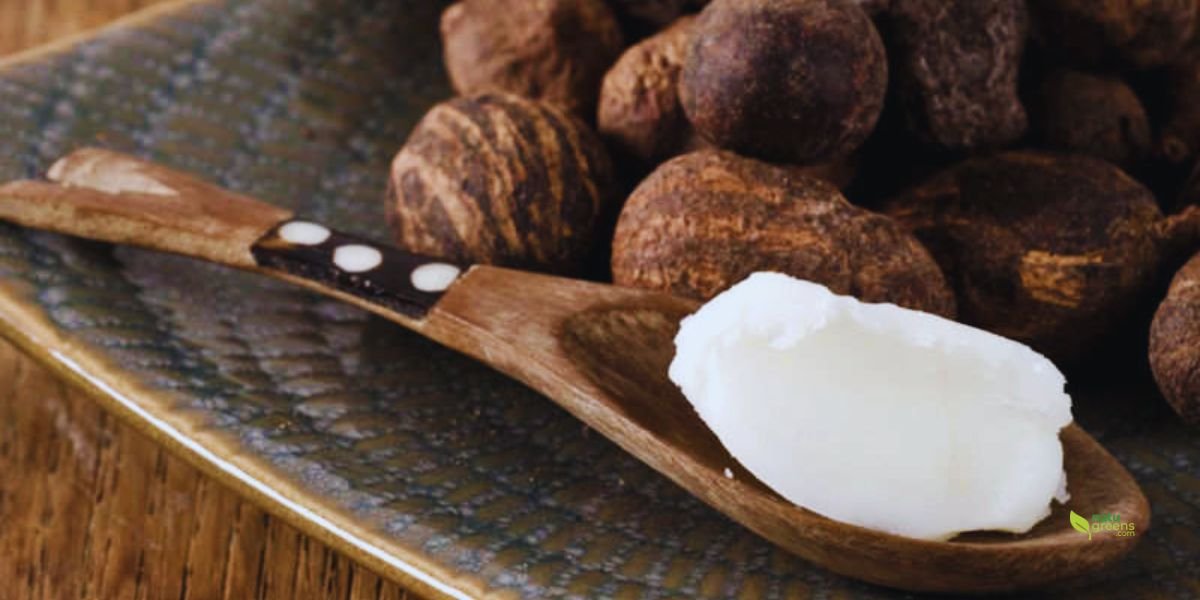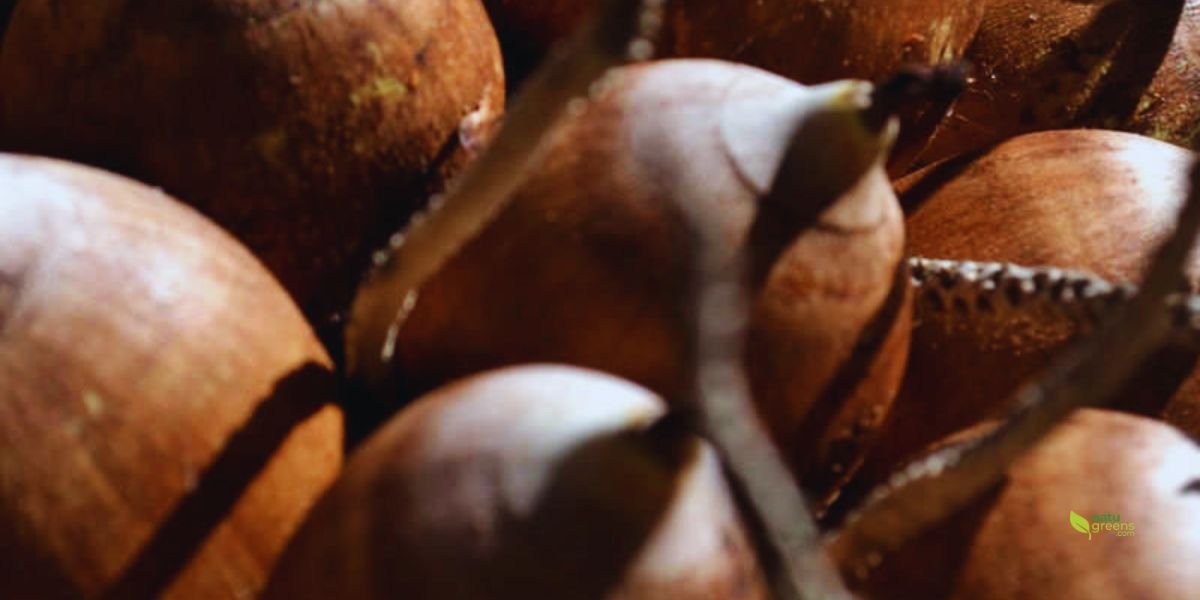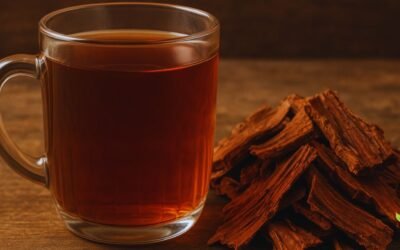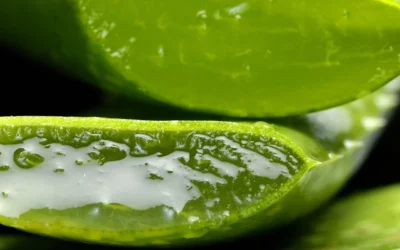Babassu, scientifically known as Orbignya speciosa, is a palm tree native to the Amazon region and the Brazilian Cerrado, with wide distribution in other South American countries. This plant, of great socioeconomic and cultural importance to local communities, is extensively used in various applications, from civil construction and handicrafts to cuisine and traditional medicine. The babassu palm is recognized for its robust trunk and clusters of fruits containing oil-rich kernels, one of its most valuable products.
Historically, babassu plays a central role in the lives of populations inhabiting the regions where the palm is abundant. The extraction of babassu, focused mainly on harvesting the coconuts for kernel extraction and oil production, is a fundamental economic activity for many families, especially women, known as “babassu coconut breakers” (quebradeiras de coco babaçu). This activity not only generates income but also keeps alive traditions and ancestral knowledge about the sustainable management and use of the palm.
In addition to its economic and cultural value, babassu has a rich history of use in folk medicine. Various parts of the plant, such as the kernels, mesocarp, coconut shell, and leaves, are employed in the treatment of a variety of health conditions. Traditional wisdom attributes medicinal properties that are being scientifically studied, seeking to validate and understand the mechanisms of action of its bioactive components.
Popular Names for Babassu
Babassu is known by various popular names, depending on the region and language:
- babassu (International Portuguese, English, French, Italian, German)
- babaçu (Brazilian Portuguese)
- palma de babasu (Spanish)
Botanical Characteristics and Ecology
Orbignya speciosa is a large palm tree, capable of reaching up to 20 meters in height. It is characterized by a solitary, columnar trunk, covered by the bases of fallen leaves in young individuals. The leaves are large, pinnate, and form a dense crown at the top of the trunk. The inflorescence is interfoliar, with separate male and female flowers (monoecious plant). The fruits are oval or ellipsoid, woody drupes, grouped in large clusters. Each fruit typically contains 3 to 5 kernels, rich in oil.
Babassu is a native species of South America, with its largest concentration and diversity in Brazil, especially in the states of Maranhão, Piauí, Tocantins, and Pará. Its distribution extends through parts of Bolivia, Peru, and Suriname. The palm adapts to different soil types, being common in transition areas between the Amazon Forest and the Cerrado, as well as in pastures and degraded areas, where it often becomes dominant, forming the so-called “babassu forests” (babaçuais). Its ability to adapt and resist adverse conditions contributes to its wide distribution and ecological importance in the regions where it occurs.
Traditional Uses and Applications for Babassu

Babassu oil
Babassu has a multiplicity of traditional uses, reflecting the ingenuity and knowledge of local communities. Every part of the palm is utilized, demonstrating its versatility and importance for subsistence.
Traditional Medicinal Use
In folk medicine, babassu is used to treat various ailments. The oil extracted from the kernels is applied topically to moisturize the skin, treat wounds and burns, and relieve muscle pain. Internally, babassu oil is consumed to treat gastrointestinal problems and as a mild laxative. The mesocarp of the coconut, a fibrous layer between the shell and the kernel, is often processed into flour, used to combat verminosis, diarrhea, and inflammation.
Infusions and decoctions made from the leaves, coconut shell, or roots are used to treat coughs, bronchitis, kidney problems, and infections. The water from green coconuts is also consumed for its hydrating and diuretic properties. These traditional uses are transmitted orally between generations and represent an important primary healthcare system for many communities, based on observation and accumulated experience over time.
Culinary Use
Babassu is a versatile ingredient in regional cuisine. oil is widely used for cooking and frying, valued for its stability and neutral flavor. From the kernel, in addition to the oil, a nutritious plant-based milk can be made, used in beverages and sweet and savory preparations. Mesocarp flour is incorporated into cakes, breads, and porridges. The babassu heart of palm is edible, although its extraction leads to the death of the palm, which limits its sustainable use.
Other products like babassu coconut oil (obtained from the pulp) and cake (residue from oil extraction, used in animal feed) also demonstrate the breadth of the palm’s use in local food and economy. The cuisine based on babassu reflects the richness of biodiversity and the creativity of the populations who live with this palm.
Other Applications for Babassu
In addition to medicine and cuisine, babassu has applications in civil construction (trunk wood, leaves for roofing), handicrafts (leaf fibers, coconut shell), charcoal production (coconut shell), and as raw material for the cosmetics and soap industry (oil). The coconut shell, being very resistant and dense, is an excellent source of thermal energy when burned, being used in ovens and boilers. The sustainability of babassu use is crucial for the preservation of the ecosystems where it thrives and for the maintenance of associated economic and cultural activities.
Chemical Composition and Scientific Research
The chemical composition of babassu has been studied to validate its traditional uses and discover new therapeutic applications. Oil is predominantly composed of saturated fatty acids, with a high concentration of lauric acid (about 50%). This composition gives the oil antimicrobial, antiviral, and anti-inflammatory properties, which may justify its traditional use in skin treatments and infections. Other fatty acids present include myristic, palmitic, and oleic acids.
Research has investigated the potential of babassu in various areas. Studies indicate the antioxidant activity of mesocarp and shell extracts, related to the presence of phenolic compounds and flavonoids. The antidiabetic, hypocholesterolemic, and immunomodulatory potential of different parts of the plant are also being explored. Research on mesocarp extract, for example, has shown promising results in reducing glucose and cholesterol levels in animal models. Isolated compounds from babassu have demonstrated activity against parasites and pathogenic microorganisms.
Although scientific research on babassu is still developing, preliminary results are promising and partly corroborate traditional knowledge about the plant. Scientific validation of these uses can lead to the development of new herbal medicines and nutraceutical products. It is important to note that, despite the therapeutic potential, the medicinal use should be done cautiously and, ideally, under the guidance of healthcare professionals, especially in cases of pre-existing medical conditions or concomitant use of other medications. Ongoing scientific research is fundamental to establishing the safety, efficacy, and appropriate dosage of babassu-derived products for medicinal purposes.
Socioeconomic and Cultural Importance
Babassu plays a vital role in the economy and culture of several regions in Brazil and other countries. The extraction of babassu coconut is an activity that sustains thousands of families, providing income through the sale of kernels, oil, and other by-products. The “babassu coconut breakers,” in particular, are central figures in this production chain, possessing deep knowledge about the palm and its ecosystem. Their organization into cooperatives and associations has been fundamental to guaranteeing rights, promoting sustainability, and adding value to babassu products.
Beyond the economic aspect, babassu is intrinsically linked to the cultural identity of local populations. Festivals, rituals, and daily practices are associated with the palm and its products. The struggle for land and access rights to forests also marks the history of these communities, who defend their way of life and the conservation of this natural resource. The valorization of babassu as a natural and cultural heritage is essential for promoting sustainable development and social justice in the regions where it occurs.
Final Considerations
Babassu (Orbignya speciosa) is much more than a palm tree; it is a symbol of cultural resistance, a source of livelihood, and a repository of traditional knowledge. Its multiple uses, ranging from food and construction to folk medicine, demonstrate the deep connection between communities and their natural environment.
The growing scientific attention to the properties of coconut opens new perspectives for the development of therapeutic and food products, adding value to the production chain and strengthening the importance of conserving forests and supporting extractive communities. The valorization of babassu involves the union of traditional knowledge with scientific research, ensuring that its benefits are utilized sustainably and equitably for present and future generations. Protecting forests and recognizing the rights of extractive communities are fundamental steps to ensure the perpetuity of this valuable resource.



